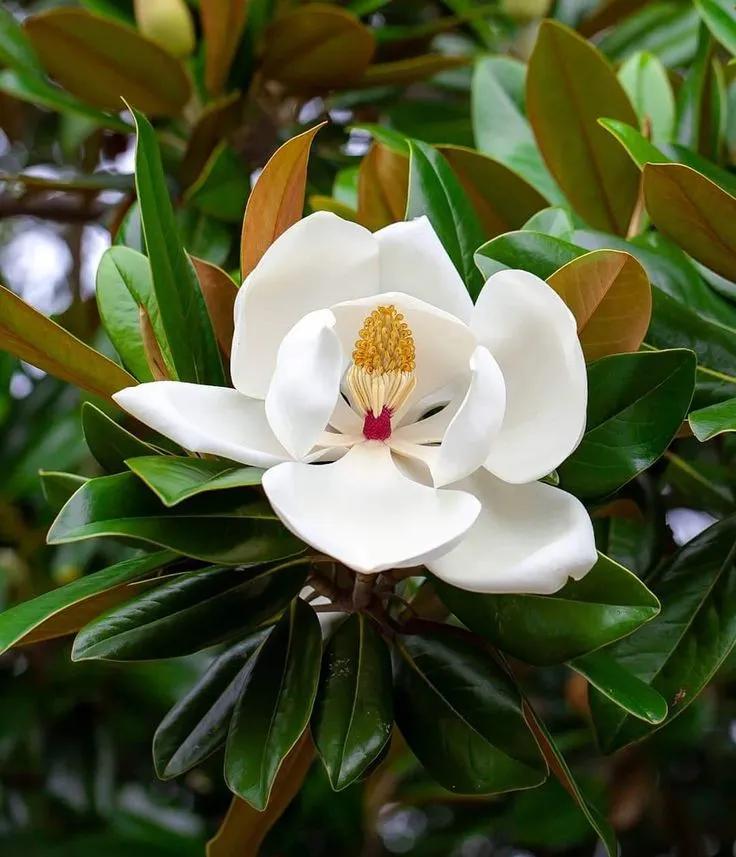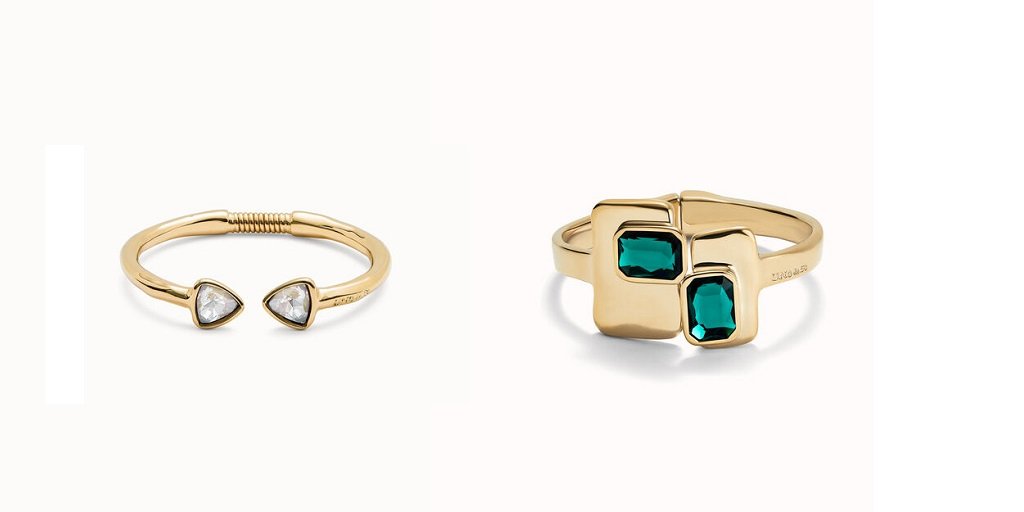The Benefits of Magnolia Grandiflora (Southern Magnolia)
Magnolia grandiflora, commonly known as Southern Magnolia, is one of the most iconic and majestic flowering trees in the southern United States. With its large, fragrant white blossoms, glossy evergreen leaves, and stately appearance, this tree has captivated gardeners, landscapers, and plant enthusiasts for centuries. Beyond its striking beauty, Magnolia grandiflora offers a wide array of benefits — ecological, medicinal, ornamental, and cultural.
This article explores the multifaceted benefits of Southern Magnolia, explaining why it’s not just a beautiful tree, but a valuable one for gardens, communities, and ecosystems.
Magnolia Grandiflora is much more than a pretty tree with fragrant flowers.
1. Aesthetic and Ornamental Appeal
Stunning Flowers
The most immediate benefit of Magnolia grandiflora is its breathtaking flowers. These creamy white blooms, which can reach up to 12 inches in diameter, are not only eye-catching but also release a sweet, lemony fragrance that attracts pollinators and delights gardeners.
Year-Round Beauty
Unlike many deciduous trees that lose their leaves in winter, Southern Magnolia is evergreen. Its dark green, leathery leaves with rust-colored undersides remain vibrant throughout the year, making it an excellent choice for adding structure and greenery to landscapes even in the cold season.
Visual Focal Point
Whether planted as a specimen tree or in a line to form a majestic border, Southern Magnolia stands out. Its symmetrical form, dense canopy, and shiny foliage make it a superb focal point in parks, estates, and home gardens.
2. Environmental and Ecological Benefits
Supports Pollinators
The large, fragrant flowers attract a wide range of pollinators, including bees, beetles, and butterflies. Pollinators are essential for the health of ecosystems, and Southern Magnolia contributes to this by supporting biodiversity.
Habitat for Wildlife
Birds and small mammals often find shelter in the dense foliage of the tree. Additionally, the cone-like fruit, which contains bright red seeds, is a food source for birds, squirrels, and other wildlife.
Soil Stabilization
The roots of Magnolia grandiflora help stabilize soil, reducing erosion on slopes and in areas with poor drainage. This makes it especially useful for landscaping projects in erosion-prone regions.
Air Purification
Like all trees, Southern Magnolia helps clean the air by absorbing carbon dioxide and releasing oxygen. Its broad leaves also trap dust, pollutants, and particulate matter, contributing to improved air quality in urban settings.
3. Shade and Cooling Effect
Southern Magnolia trees grow large, often reaching heights of 60 to 80 feet and spreading up to 40 feet wide. Their dense canopy offers excellent shade, which provides a cooling effect during hot summers.
Reduces Urban Heat
In urban areas, the tree’s shade helps reduce the “heat island” effect, lowering surrounding temperatures. This not only improves comfort but also reduces energy costs by minimizing the need for air conditioning.
Protects Understory Plants
The tree creates a microclimate beneath its canopy, offering protection to shade-loving plants and creating a more hospitable environment for other species to thrive.
4. Low Maintenance and Durability
Pest and Disease Resistance
Magnolia grandiflora is known for its resilience. It has natural resistance to many pests and diseases, reducing the need for chemical interventions and ongoing care.
Drought Tolerant
Once established, this tree is relatively drought tolerant, making it a practical option for areas with inconsistent rainfall or water restrictions.
Long Lifespan
With proper care, Southern Magnolias can live for over 100 years. This longevity makes them a long-term investment for landscapes and gardens.
5. Medicinal and Health Benefits
While not as commonly used in modern herbal medicine as other plants, Magnolia grandiflora has a history of medicinal use, particularly in traditional Chinese medicine.
Anti-inflammatory Properties
Extracts from the bark of Magnolia species have shown anti-inflammatory properties. These extracts contain compounds like honokiol and magnolol, which are being studied for their effects on inflammation and immune response.
Antioxidant Effects
Magnolia bark has antioxidant properties that can help combat oxidative stress, which is linked to chronic diseases such as cancer, heart disease, and aging-related conditions.
Anxiety and Sleep Support
Honokiol and magnolol have also been studied for their calming effects on the nervous system. In traditional uses, Magnolia bark has been used to promote relaxation, reduce anxiety, and improve sleep quality.
Note: Always consult a healthcare provider before using any plant for medicinal purposes.
Note:Magnolia Grandiflora is much more than a pretty tree with fragrant flowers.
6. Cultural and Symbolic Value
Southern Charm
In Southern American culture, Magnolia grandiflora is a symbol of hospitality, nobility, and enduring beauty. It often appears in literature, art, and architecture as a representation of grace and elegance.
Wedding and Event Décor
Magnolia flowers and leaves are popular in floral arrangements for weddings, especially in the South. Their symbolism and aesthetic appeal make them ideal for representing purity, dignity, and timelessness.
Heritage Trees
Many Southern Magnolias are planted in historical homes, cemeteries, and estates as living monuments. Their long lifespan makes them a link to the past, standing as silent witnesses to generations of history.
7. Landscaping Versatility
Suitable for Various Climates
Though native to the Southeastern U.S., Magnolia grandiflora can adapt to a variety of environments, especially in USDA zones 6 through 10. With proper care, it can even be grown in colder areas as an ornamental tree.
Privacy and Windbreak
Due to its dense foliage, Southern Magnolia makes an excellent privacy screen or windbreak when planted in rows. This is particularly useful for homeowners seeking natural fencing options.
Container Growth for Smaller Spaces
Dwarf cultivars such as ‘Little Gem’ or ‘Teddy Bear’ allow Magnolia grandiflora to be grown in smaller gardens or even large containers, expanding its usability for urban and small-scale landscaping.
8. Economic and Commercial Value
Timber and Wood Products
Though not widely used in modern forestry, Magnolia wood is prized for its workability and fine texture. It is sometimes used in furniture making, veneer, and even for crafts and musical instruments.
Florist Industry
Magnolia foliage is popular in the floral industry for its durability and aesthetic appeal. It is often used in wreaths, centerpieces, and bouquets.
Nursery Sales
Magnolia grandiflora is a popular species in nurseries and garden centers, generating economic value for horticultural businesses.
9. Educational and Research Importance
Botanic gardens and universities often grow Magnolia grandiflora for educational and research purposes. Its distinct evolutionary lineage and floral structure make it a useful specimen in the study of plant evolution and systematics.
Magnolias are among the most ancient flowering plants, dating back millions of years. Studying these trees helps scientists understand plant development, pollination biology, and genetic diversity.
10. Psychological and Emotional Benefits
Stress Relief
Spending time around green, leafy spaces has been proven to reduce stress, anxiety, and mental fatigue. A blooming Magnolia tree, with its graceful appearance and soothing fragrance, provides emotional comfort and joy.
Connection with Nature
Planting and caring for a tree like Southern Magnolia encourages a connection with nature. This interaction supports mental health and fosters environmental stewardship in both children and adults.
Conclusion
Magnolia Grandiflora is much more than a pretty tree with fragrant flowers. It is a powerhouse of ecological, medicinal, and cultural benefits. From supporting pollinators to beautifying landscapes, from purifying air to calming the mind, this tree earns its place in both gardens and hearts.
Whether you’re a homeowner looking to enhance your garden, a landscaper aiming for year-round elegance, or a nature enthusiast wanting to support biodiversity, Southern Magnolia offers a rich blend of form and function. Its longevity, resilience, and myriad of uses make it one of the most valuable ornamental trees you can plant.
In a world where green spaces are increasingly precious, Magnolia grandiflora stands tall — quite literally — as a symbol of natural grace and lasting benefit.
Would you like a version formatted for a blog post or webpage (with headings, bullet points, and SEO-friendly structure)?











Leave a Reply